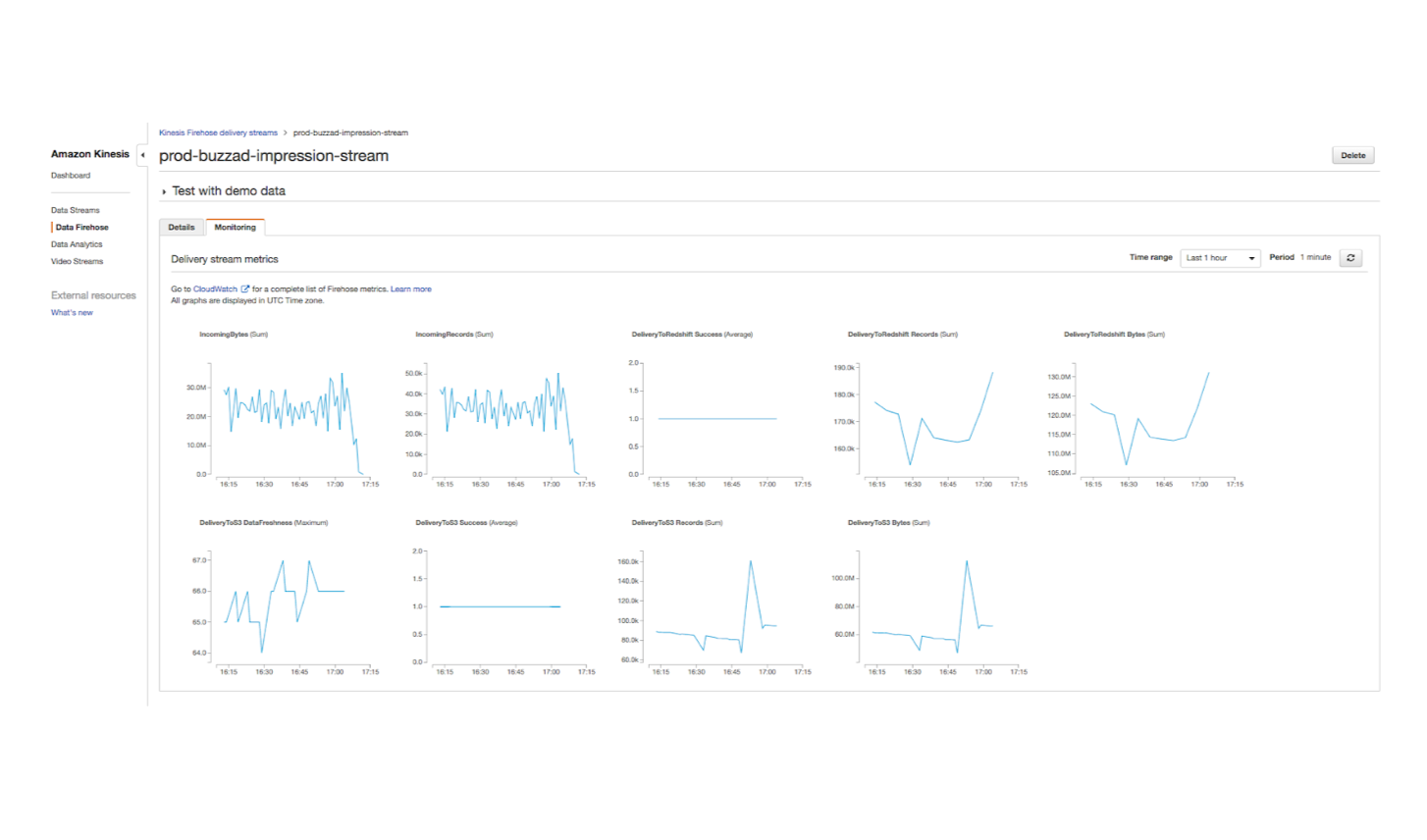Python 2.7 서버의 CI Test 개선 - 13분에서 3분으로
들어가며 안녕하세요 Supply 그룹 Product Backend 팀의 Elric 입니다. 버즈빌에서 운영중인 허니스크린은 2013년에 출시된 서비스로 현재는 운영 및 유지보수에 집중하며 신규 피쳐를 테스트 할 수 있는 일종의 테스트 베드(test bed) …
Read ArticleAt Buzzvil, we are keeping track of activities of more than 17 million user in more than 30 nations. Such activities include various screen-related activities, AD impressions, AD clicks, AD conversions and beyond. These data comes from multitude of sources and usually get stored in different types of databases ( MySQL, DynamoDB, Redis, and even S3). By having these data in a single storage, we were able to analyze cross-service and cross-platform metrics with ease.
Building and maintaining a data pipeline that directs the data from multiple sources to a single data warehouse was a challenge for our team. And here is how we did it!
Before we discuss the pipeline, Redshift, our main data warehouse is worth mentioning in this blog post. It has surprised us since the beginning and is continuing to do so. Redshift is an AWS-managed, SQL based columnar data warehouse suited for complex and large-scale analytics. It is a solution well adapted by many enterprises customers (Yelp, Coursera, Pinterest, etc.), to drive insight from various types of data generated from their customers. At Buzzvil, we adapted Redshift because of the following reasons:
 However, there are some drawbacks as well:
However, there are some drawbacks as well:
There are mainly 3 ways that we use to deliver data to Redshift.

Why?
The primary reason for such preprocessing step is the sheer size of the incoming data. Some data might be too raw for analysts and data scientists to query directly. Thus, we utilized AWS Athena (https://aws.amazon.com/athena/) to leverage the fact that AWS only charges us for the size of the data read by the Athena query. If we are to preprocess the data through EMR or other MapReduce solutions, we might have to spend much more on computing costs in order to process more than
How?
1. Send data to S3
2. Aggregate/Process using Athena
3. Load the processed data into Redshift (COPY command)
Pros?
1. Serverless (No need to manage EMR clusters or servers)
2. Cheap ($5 for each 1TB read from S3)
Cons?
1. During peak hours (12:00 AM UTC), some queries might fail. -> We do not recommend running mission-critical logics on Athena.
2. Does not (yet) provide the full functionality of PRESTO DB.
Why?
Kinesis Firehose is excellent as it not only provides a stable pipeline to various data destinations such as Redshift, Elasticsearch and S3, but also seamlessly integrates with Fluentd which provides a steady and stable stream of data from servers to firehose.With firehose-fluentd integration, rather than having to manage two separate pipelines ( SERVER -> S3, S3 -> Redshift ), we only have to manage and monitor a single data pipeline from the source to the sink.
How?
(https://docs.aws.amazon.com/firehose/latest/dev/what-is-this-service.html) 1.Create Firehose delivery stream with correct data format and ingestion period of your choice.
conf["user_activity"] = {
"DataTableName": "user_activity",
"DataTableColumns": "user_id, app_id, activity_type, timestamp",
"CopyOptions": "FORMAT AS JSON "s3://buzzvil-firehose/sample/user_activity/jsonpaths/user_activity_log-0001.jsonpaths" gzip TIMEFORMAT AS "YYYY-MM-DDTHH:MI:SS" ACCEPTINVCHARS TRUNCATECOLUMNS COMPUPDATE OFF STATUPDATE OFF",
"jsonpaths_file": "buzzvil-firehose/sample/user_activity/jsonpaths/user_activity_log-0001.jsonpaths",
}
configuration = {
"RoleARN": "arn:aws:iam::xxxxxxxxxxxx:role/firehose_delivery_role",
"ClusterJDBCURL": "jdbc:redshift://buzzvil.xxxxxxxxx.us-west-2.redshift.amazonaws.com:5439/sample_db",
"CopyCommand": {
"DataTableName": sample_table,
"DataTableColumns": conf[type]["DataTableColumns"],
"CopyOptions": conf[type]["CopyOptions"],
},
"Username": db_user,
"Password": db_password,
"S3Configuration": {
"RoleARN": "arn:aws:iam::xxxxxxxxxxxx:role/firehose_delivery_role",
"BucketARN": "arn:aws:s3:::firehose_bucket",
"Prefix": "buzzvil/user_activity/",
"BufferingHints": {
"SizeInMBs": 64,
"IntervalInSeconds": 60
},
"CompressionFormat": "GZIP",
"EncryptionConfiguration": {
"NoEncryptionConfig": "NoEncryption",
}
}
}
2.Setup and run Fluentd docker containers in each server.
<source>
@type tail
path /var/log/containers/buzzad/impression.json
pos_file /var/log/containers/td-agent/impression-json.pos
format none
tag firehose.impression
</source>
<match firehose.impression>
@type kinesis_firehose
region us-west-2
delivery_stream_name "prod-buzzad-impression-stream"
flush_interval 1s
data_key message
</match>
3.Monitor as data is captured by Firehose and are sent to Redshift.

Pros?
Cons?
Why?
In order to sync subsets of data from multiple RDS MySQL databases, we had to employ three different techniques to copy the relevant data to our Redshift cluster (This is the least glamorous option of the three).
How?
FULL_COPY
INCREMENTAL_COPY
UPDATE_LATEST_COPY
Pros?
Cons?
These three methods differ by the type of data that is being delivered to the target sink. For example, transactional, log type data would be delivered by firehose or be aggregated and then loaded to Redshift. On the other hand, fact tables from MySQL might be synced to Redshift via a specific type of CDC (change data capture) sync method. A combination of these 3 methods allows our analysts and BD managers to query cross-service or cross-platform data with ease.
들어가며 안녕하세요 Supply 그룹 Product Backend 팀의 Elric 입니다. 버즈빌에서 운영중인 허니스크린은 2013년에 출시된 서비스로 현재는 운영 및 유지보수에 집중하며 신규 피쳐를 테스트 할 수 있는 일종의 테스트 베드(test bed) …
Read Article2026년은 버즈빌 디자인 팀에게 전환점이 되는 해입니다. 이제 도구 선택은 단순한 운영상의 결정이 아니라, 차세대 AI 기반 제품 개발을 지원할 수 있는 ‘코드와 연결된 통합 디자인 시스템’을 향한 전략적 행보입니다. …
Read Article